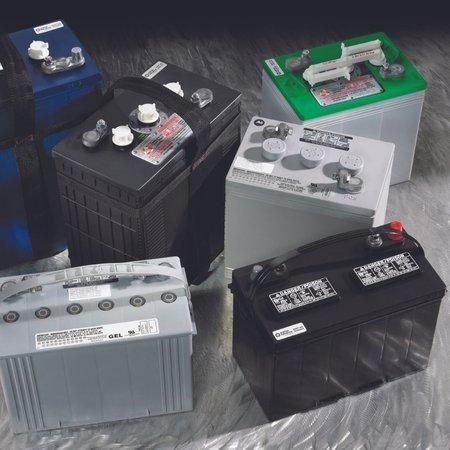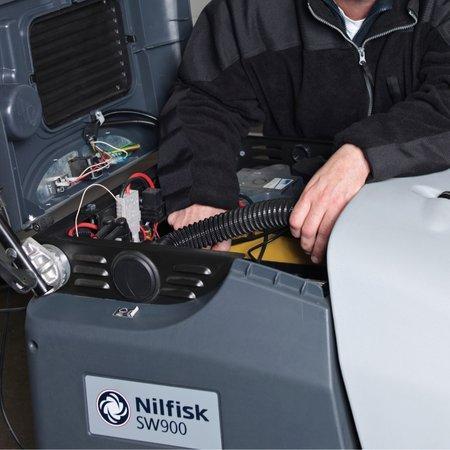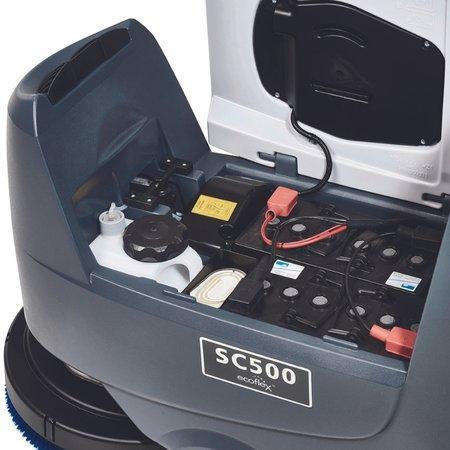Batteries are one of the most important consumable items in a professional cleaning machine. Built to last several years, lead-acid batteries and AGM batteries are some of the most common battery types found in commercial scrubbers and sweepers that require proper care for maximum performance. Below we have developed a list of best practices to use, store, maintain, charge and dispose of lead-acid and AGM batteries.
How do lead-acid batteries work?
Lead acid batteries are commonly used to supply power for starting/operating vehicles, consisting of a negative/positive plate, an insulating separator and an electrolyte (water + sulphuric acid). For scrubbing and sweeping machines, the batteries are typically located at the front of the machine under the hood with either an on-board or off-board charger. The batteries come in different voltage capacities.
AGM batteries are specifically suited towards shorter cleaning times and eliminate maintaining water levels in the cells, as AGM are maintenance-free, sealed batteries. There is no difference between a Lead Acid battery to an AGM battery with regard to cycle and charging requirements. The only difference is the maintenance of the battery.



Battery Use
Fully charge batteries before use; it will allow longer cleaning times and prevents battery life to dwindle
Avoid completely flattening the battery during use; this leads to a significant reduction in performance and overall battery life.
Use distilled water to keep electrolyte levels at an adequate amount above the plates; tap water will damage battery cells due to the chemicals in it. Be sure not to overfill batteries as electrolytes will expand and overflow.
Be mindful of run times vs charge cycles. The longer the runtime, the lesser the number of charge cycles. Determine the most optimal run and charge amounts for your needs.
Some batteries are made with a single-point watering system, making it easier to fill and prevent overflow by filling at a single point on the battery. Contact your local battery supplier for more details.
Battery Storage
- Ensure batteries are fully charged before storing. Low-charge batteries left unattended can cause early battery failure due to the build-up of lead sulfate crystals.
Avoid placing in areas where direct sunlight can hit the battery.
Battery Charging
Always charge after use to prevent sulfation (refer to ‘Storage’ heading above)
Charge in low-temperature, well-ventilated areas; explosive conditions can occur in high temperatures.
Keeping batteries charged all times will increase the total life of the battery.
Ensure the correct charger leads are connected to the battery terminal (red positive and black negative).
Only use the charger supplied with your battery and do not touch leads when the charger is on. The use of a charger that is not suitable can cause battery damage. Also, the charger needs to be programmed to the correct algorithm to charge the batteries correctly.
Monitor battery temperature when charging; if it becomes too hot, turn off.
Battery Servicing
Frequently clean the cables and terminal connections to avoid corrosion. If corrosion occurs, remove it.
Keep a watering log to track the frequency of battery filling.
Battery Disposal
Lead acid battery disposal is not suitable for general waste services. Seek professional battery collection or alternatively drop-off at an accredited location such as R&J Batteries.
More specific care and safety guides can be found at your local battery supplier. If you are having trouble with your cleaning machine’s battery or have more specific questions, reach out to our team and we will be able to connect you with the right expert!